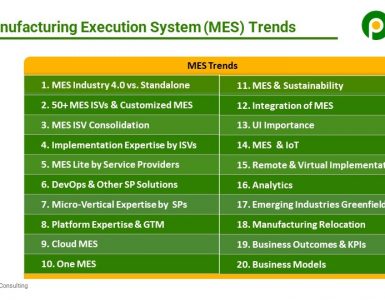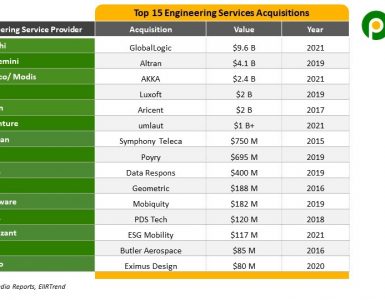Is there any moat in the engineering services business? If yes, then how can investors identify it?
A moat in business, attributed to Warren Buffett, is a term used to describe a company's competitive advantage. As a moat protects a castle, certain advantages help protect companies from their competitors and enable growth.
A moat is something that is
- Difficult to achieve
- Enabler for high performance
- Not easy for competitors to navigate
There can be different moats depending upon industry structure and company strategies.
One moat in engineering services is engineering service providers' high-value relationships with high R&D spenders. Quantifying them for the sake of understanding.
- High-value relationships in engineering services could be customers with an annual contract value (ACV) greater than USD 5 million.
- High R&D spenders could be customers that have annual R&D spend above USD 500 million.
The number of customer relationships at the intersection of high-value relationships and high R&D spender relations is a moat in engineering services. The more such relationships an engineering service provider has more is its moat.

Why is a greater number of high-value relationships with high R&D spenders moat for engineering service providers?
- Difficult to achieve. High-value relationships are difficult to achieve. There are no big RFPs for selecting a new engineering service provider. Engineering engagements typically start very small, and the engineering service providers have to work hard and impress their customers with performance to win more business and increase account size. It takes time to achieve a decent account size and testament of sales, marketing, delivery performance, and relationship management.
- Enabler for high performance. Large deals or large accounts are necessary to grow the engineering services business. High R&D spenders can provide more opportunities for engineering service providers to grow either with large deals or large work, even if in the form of a number of small deals. When these high R&D spenders lookout for identifying engineering service providers for large deals or large work, they mostly look among their existing service providers base. So having high-value relationships with a demonstrated history of performance can set engineering service providers for further growth in these accounts. These high-value relationships with high R&D spenders build with small wins are like a flywheel that gives growth momentum later with large deals.
- Not easy for competitors to navigate. High-value relationships are a sort of learning curve with demonstrated performance. Competitors can't replicate high-value relationships easily. Even if some customer relationships are inherited via acquisitions, acquirers have to perform and grow these relationships further.
Bottom Line: Why is moat important in engineering services? There is a long tail of engineering service providers globally, and very few go to the next level. On the other hand, only 5% of R&D spend is outsourced. The mismatch is that not many engineering service providers are able to build the moat of a large number of high-value relationships with high R&D spenders. These relationships build a flywheel for growth,
The engineering services business is all about relationships and performance – start a relationship, give s good performance, grow the relationship, and repeat this flywheel for a number of high R&D spenders. In the simplicity of relationship and performance lies the complexity, and hence it is difficult to achieve. The focus of management and investors in building moats will improve the growth prospects of many engineering providers.






 Pareekh Jain
Founder of Pareekh Consulting & EIIRTrends
Pareekh Jain
Founder of Pareekh Consulting & EIIRTrends
Add comment